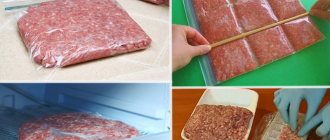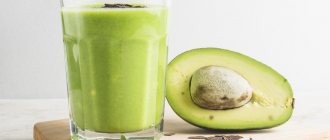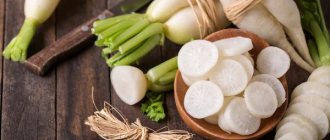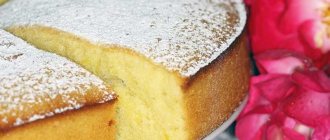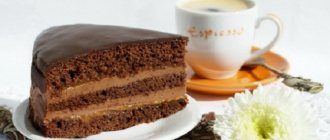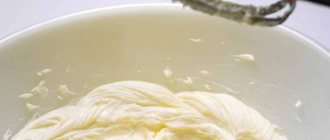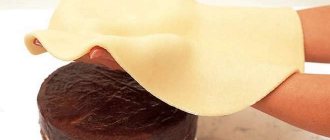Today, cakes made from sugar mastic are becoming increasingly popular. Thanks to the variety of confectionery tools and ingredients, now not only professionals, but also amateurs can try their hand at this art. But you shouldn’t expect that you will achieve “unearthly beauty” the first time: the art of working with mastic, like any other art, needs to be learned. Each business has its own secrets and tricks, which can be achieved through trial and error. So that you can quickly and efficiently learn how to work with sugar mastic, we have prepared a selection of useful tips for you.
How to roll out sugar mastic correctly?
There are several ways to roll out sugar mastic:
- On a surface sprinkled with starch or powdered sugar.
- Between sheets of polyethylene greased with vegetable oil.
- On a non-stick mat.
The most famous method is to roll out the mastic on a surface sprinkled with powder or starch. The only difficulty with the first method is that the rolled out layer of sugar mastic must be constantly turned while rolling so that it does not stick to the surface. If you choose the second option, you will need to remove the top layer of polyethylene from the rolled out mastic, turn the layer over, evenly cover the cake with it, and only then separate the second layer of polyethylene. However, thin polyethylene (for example, cling film) is not suitable for our purposes: here we need to use something thicker and more substantial, like film for greenhouses.
What to do if the mastic keeps tearing or cracking?
Sugar mastic is not intended for very thin rolling. The thickness of the layer should be approximately 2–3 mm (thicker is also not advisable). Thinly rolled mastic has its drawbacks: firstly, it can tear while covering the cake, and secondly, all the defects and unevenness of your culinary masterpiece (for example, layers of cake and pieces of cream) will be visible under it. All errors must be corrected before you decide to cover the cake with sugar mastic. The surface of the cake should be smooth, without protruding edges or folds.
It is also possible that when mixing the mastic you used “coarsely ground” powdered sugar, which contains whole sugar crystals. There’s nothing you can do about it: this mastic will tear even when rolled out.
If the layer with which the cake was covered nevertheless breaks at the most crucial moment, do not despair. To restore the cake, it is best to remove the layer of mastic and cover it again. If the first step is impossible, then seams, patches and other defects can be “smoothed out” using a pastry iron and vegetable fat. Apply the fat to the damaged surface and smooth the cake with an iron until its surface is perfectly smooth. And if you suddenly find air bubbles under the layer of mastic, try piercing them with a needle and then carefully smooth out the “holes.”
Mastic toppers
Today I’m telling you and showing you how to make beautiful, spectacular, and incredibly time- and labor-saving fondant toppers for a children’s cake! At the same time, we’ll learn how to work with sugar and wafer paper, the topic is interesting, the material has great potential, but we’ve never written anything about it, we need to improve!
We recommend reading: Dried apricots White Plaque
I will demonstrate it using the example of a children's cake with Fixies. I recently had a story with him that is probably familiar to every home pastry chef. Nine in the evening, the doorbell rings - neighbors. Cake for tomorrow. To kid. With the Fixies! “He’s asking very much - he really wants it - it’s a birthday - how would it be without a cake - help me out!” The situation, frankly speaking, is not pleasant, and the most reasonable thing is to refuse, but how? After all, people are not completely strangers. And Fiksikov, meanwhile, wants almost everyone. In general, in such cases, if you can’t refuse, and you don’t know how to draw, the only way out is printing on sugar or wafer paper and mastic toppers. Well, don’t sculpt the whole company, really?
The only condition is the opportunity to make this same sugar or waffle picture somewhere. To print, you need a printer, and not necessarily a special confectionery one (I’m not even sure that such exist), but filled with cartridges with food coloring. The service of printing on edible paper is provided by some confectionery stores, as well as private confectioners at home, those who have purchased a printer and cartridges. So that the paint does not dry out and the printer serves for a long time and properly, you need to print pictures at least once a day, which is why almost everyone who has this printer does not refuse those who want to make sugar pictures. You just need to find a person who lives near you, write to him, agree on a price, send him the file in a jeep and agree on a time when you can pick up the finished picture.
You can print with food dyes on both sugar and wafer paper. Sugar is denser, the image on it is brighter, but it is usually a little more expensive. What to use is up to you.
Here is my sugar picture.
You see, it is packed in a zip bag (in this form, including a large thick envelope, the store where I print gives the pictures to clients is very thoughtful and pleasant). If you are not going to use the picture right away, store it in a ziplock bag: it will not allow air to pass through, and your picture will retain its inherent slight flexibility. From a long stay in the open air, sugar pictures dry out, become brittle and brittle. But this, by the way, does not threaten the waffle, but it is brittle in itself.
Let me show you the sugar picture closer. It is slightly rough, and the print is quite bright. The paper itself is glued to a thick film.
Here you can roughly understand the thickness.
So, let's make a topper for a children's cake!
...along the contour, with a slight indentation, however, as you like.
Take a piece of mastic, which dries quickly. This could be gelatin mastic (but it is not at all tasty, in my opinion, and becomes very hard; I decided that if children decide to chew on the topper, it could simply be dangerous for their teeth)) or purchased mastic like Vizyon or “Top -product”, to which you can add SMS (powder, sold in confectionery stores) to speed up drying. However, if you have time, you can do without SMS, it will just take longer to dry.
I have here white vanilla mastic “Top Product”, probably the most budget-friendly one today, but very good.
I added a pinch of SMS.
Kneaded it. Rolled it into a ball and flattened it slightly.
Rolled it out to a thickness of 5 mm (it can be thinner, depending on how thick your skewers are).
I attached a picture. I drew a stack around the outline.
Cut it out. This must be done very carefully!
I inserted the skewer a few cm deep so that it would hold well. The thickness of the skewer must be completely immersed in the mastic! In other words, when rolling out the mastic, take into account the thickness of the skewer.
Lubricate the mastic with a thin layer of decorgel (can be replaced with honey diluted in water), very lightly and evenly.
We remove the film from the picture.
Carefully glue the image to the mastic.
Our topper is ready!
Let it dry and you can add it to the cake!
Drying time depends on many factors: mastic, topper size, room humidity. This little Nolik made from Top Product mastic with the addition of SMS dried in at most an hour.
And here is the whole bunch. Bright and beautiful! And most importantly - quickly, if there is somewhere to print the picture.
A solution for those who need everything at once for a 1 kg cake)
Here are our fondant toppers on the cake.
Well, the whole cake.
The cake has a minimalist design. The only decorations are toppers made of mastic and screws, also made of mastic. It was an urgent cake, as you understand, so I had to do everything very quickly and a silicone mold from the CakeUp store literally saved me in that situation. I simply sprinkled it with cornstarch, took small pieces of mastic, painted them in the desired colors, filled the recesses with them, ran a knife along the surface of the mold, holding it flat and cutting off the excess mastic, and took out the parts!
We recommend reading: Can you leave boiled mushrooms in water overnight?
If you have time, you can let them dry a little or freeze them in the freezer, they will come out even better. But even so, in a hurry the result is excellent!
The mold with numbers, by the way, is also from the same store. And the stand))) In short, I have a lot of everything from there) But what can you do if the things are really worthwhile!
We work with waffle paper in the same way. Well, or almost: the image on it is not as bright as on sugar paper, so you can often find a recommendation to cover it with decor gel on top. This way it will indeed become much brighter, but it will acquire a gloss, and not everyone likes it. The waffle also comes in waves more often, but I think it's a matter of practice.
The cake has a minimalist design. The only decorations are toppers made of mastic and screws, also made of mastic. It was an urgent cake, as you understand, so I had to do everything very quickly and a silicone mold from the CakeUp store literally saved me in that situation. I simply sprinkled it with cornstarch, took small pieces of mastic, painted them in the desired colors, filled the recesses with them, ran a knife along the surface of the mold, holding it flat and cutting off the excess mastic, and took out the parts!
How to properly cover a cake with sugar mastic?
In order to avoid unsightly folds on the sides of the cake, you need the following: roll out the sugar mastic with a small margin (about 5-10 cm) and so that this margin is maintained around the entire circumference. While covering the cake, the sugar mastic will stretch under its own weight and lie flat on it. After that, take a round pizza cutter and carefully cut off “all the excess.”
What to do if the base begins to show through from under the layer of mastic?
Most likely, it’s a matter of humidity: sugar mastic is very sensitive to it. Perhaps you did not comply with storage conditions or used a lot of impregnation. The finished cake must be stored in a tightly closed sealed box or in a plastic bag (and preferably for no more than 2 days).
How to soften cake mastic?
Not only the delicious filling and juicy cake layers, but also the neat sweet mastic with a perfectly smooth surface helps make the cake a real work of art. As a result of improper storage, non-compliance with the exact recipe during the preparation process, or for unknown reasons, the mass has dried out, it is quite possible to revive it in a simple way. It is enough to follow one of the following rules:
- The mastic mass must be placed in a dense and high-temperature resistant plastic bag, which must be tightly tied. The bag should be left in hot water and allowed to stand for about half an hour. Then you can take out the product, knead it and use it to decorate the cake.
- When the cake mastic has dried, you can repeat the recommendations from the first method, only at the time of kneading you should add a little lemon juice to the mixture. In this case, the mastic layer will be easy to knead, roll out and sculpt.
- If you need to quickly revive the mastic mass, the paste can be kneaded with a spoonful of unscented vegetable oil. Continue kneading for about 10 minutes until the consistency becomes suitable for decorating desserts.
- The dried mastic mass can simply be heated in the microwave, after which the product must be slightly crushed and rolled out on a flat surface. If all the recommendations did not help, and the paste continues to break and crumble, you can add a small piece of butter to it and heat it together in the microwave. At the time of kneading, the mastic will seem a little liquid and viscous, so it’s worth adding sifted starch and flour to bring it to the desired consistency.
- If you plan to prepare confectionery products in advance, you should immediately find out how to soften dried mastic. It is recommended to check the pasta about a day before cooking. If the material crumbles and cannot be kneaded, it can be placed in a sealed plastic bag and placed on the radiator or left in any warm place for several hours.
What should the cake layer be like?
For the base, it is best to use dry biscuits or butter cakes. It is advisable to use buttercream or ganache. Souffle, cream, sour cream can sag under the weight of mastic or make the cakes moist and soft. After the cake is covered with cream, it must be refrigerated for several hours. Once the cream has hardened, the cake can be covered with sugar mastic. If the cream does not have time to completely harden, unsightly dents may form on the surface of the cake after coating with mastic.
